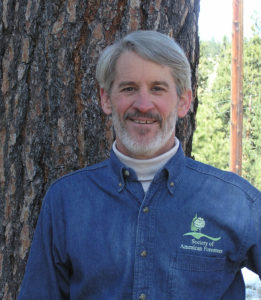Leadership. Innovation. Entrepreneurship. Risk-taking. These characteristics generate advances that “disrupt” markets, as the first article in our series on mass timber illustrated.

There is often a narrative that such innovation only occurs in the private sector, but in Springfield, Oregon, the mayor, superintendent of schools, University of Oregon students and faculty all played a role pushing the proverbial envelope.
The mayor and city are putting up public funds to help reduce the risk and expense of the first parking structure built from mass timber. That’s critical.
They are also working with code officials to embrace the value of experimenting with these new ideas in “green” construction. It is not easy for code officials, as their primary responsibility is to ensure safe structures. They’re on unfamiliar ground.
All of this is part of new product and market development. And Springfield isn’t the lone ranger of mass timber.
Later this month, we’ll focus on the business entrepreneurs who exemplify the characteristics of disruption, looking at the first two commercial-scale cross-laminated timber manufacturers in the United States: Smartlam in Columbia Falls, Montana, and DR Johnson in Riddle, Oregon.
These family businesses – not the large, corporate-owned businesses – stepped up to lead the way in developing and demonstrating the utilization of mass timber.
The recent announcement of the nation’s third CLT plant, this by the Vaagen family in Colville, Washington, is another example of small-business people leading the way.
Why? What drives these folks to take such risks? Treesource will explore the motivations of community viability, embracing the future of new technologies, new methods, more sustainable construction and the creation of good-paying jobs in a rural town to keep children and grandchildren living nearby. It is also the excitement of doing something new and challenging, of being pioneers. It just seems to be in the nature of some people to seize the day.
The leaders and people of Springfield want to improve their future. So they are pulling together the public and private sectors to achieve common goals, through education, public investment, creating the skilled workers of the future and a vision of what is possible rather than lamenting what was.
This can-do attitude is alive and well in some communities and businesses working to pave the path to a sustainable future.
Dave Atkins, Publisher and CEO

[…] DAVID ATKINS – TREESOURCE · Image by CRAIG RAWLINGS / FOREST BUSINESS […]